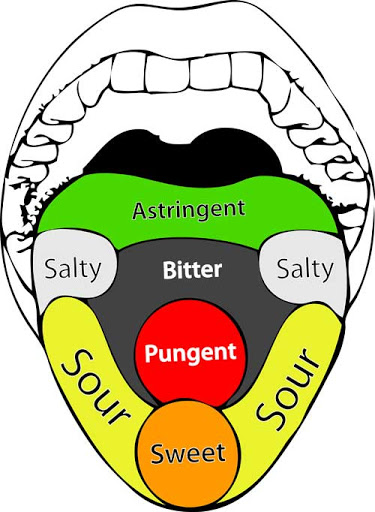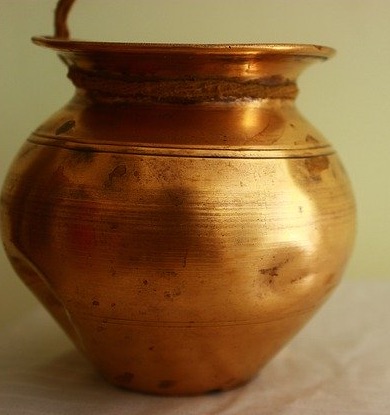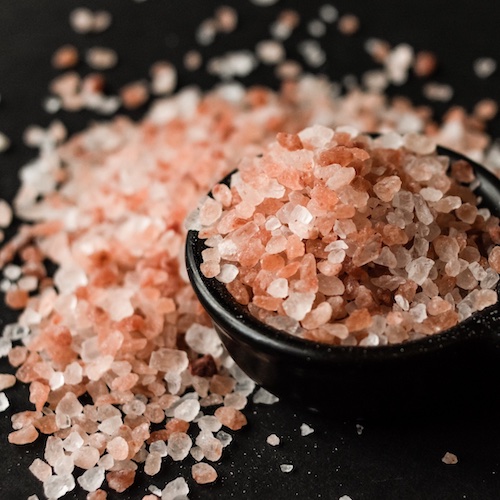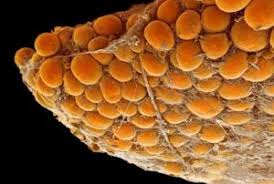Vata dosha is one of the three doshas or vital forces described in Ayurveda. Vata or Vayu is the main energetic force that carries all other forces to their destination. Nobody’s function takes place without the presence of Vata.
Related article Ayurveda Tridosha Theory for Diagnosis of Diseases
Table of Content
What is Vata Dosha Imbalance and its symptoms ?
Diseases Caused by Vata Dosha Imbalance
Characteristics of vata dosha and vata body type
Vata Dosha Balancing Foods and Diet
What is Vata Dosha?
Vata dosha is one of the three energetic forces (Tridosha ) described in Ayurveda. These three energetic forces (Vata dosha, pitta dosha, and Kapha dosha) in balanced condition maintain the body health and also keep diseases at bay. When an Imbalanced body suffers from diseases.
Vata dosha is made of air (vayu) and Ether or Space (akasha) the 2 basic elements in ‘Pancha mahabhuta‘ (pancha mahabhuta – Akasha (space), vayu(air), agni (fire), jala (water), pruthvi (earth) ) . Akasha or space creates a path for vata to move.
Functions of Vata Dosha
Vata dosha is one of the three energetic forces. It influences the remaining two doshas, I,e, pitta dosha, and Kapha dosha. When Vata is in the balanced condition the remaining two doshas will also become balanced. Hence balancing Vata is very important.
Vata in its normal balanced state protects the body, boosts enthusiasm, initiates normal respiration, keeps all activities of the nervous system like movements, speech, sensation, etc in balance. Regulation of excretory functions like urination, bowel movement, semen ejaculation, contraction of uterus to expel the fetus, and regulating natural urges. Maintenance of functions of sense organs and protecting tissues are also functions of Vata.
What are Vata Dosha Imbalance and its symptoms?
Vata dosha can get imbalanced in two ways
1. It may increase.
2. It may decrease.
Based on these variations vata has to be balanced.
Symptoms of Vata increase:
Acharya Vaghbhata explains symptoms of Vata increase as follows
1. Emaciation of body
2. Skin complexion darkens.
3. Dry and scaly skin. (May flare up psoriasis).
4. Desire for hot foods, hot weather, and warm climate increases.
5. Tremors occur in the hands, legs, and other muscles.
6. Distension of the abdomen due to accumulation of gas.
7. Dry, hard stools, and Constipation. This may lead to erectile dysfunction.
8. Loss of strength.
9. Insomnia or loss of good sleep.
10. Weakening of sensory organs.
11. Giddiness.
12. Lack of courage and self-confidence
13. Worries. nervousness, stress, anxiety, panic, fear
Symptoms of Vata dosha decrease:
Acharya Vaghbhata explains symptoms of Vata decrease as follows
1. Reduced strength and lack of energy (lassitude).
2. Decreased body activity.
3. Speaks less.
4. Loss of sensation.
5. Reduced digestion capacity or Agni.
6. Excess salivation.
7. Increased sleep.
8. Cold feeling of palms and feet.
9. Dyspnoea and cough.
Diseases Caused by Vata Dosha Imbalance
- Insomnia or sleeplessness,
- dry skin, wrinkles, cracked feet,
- constipation,
- pain in joints, Gout, and increased uric acid levels
- Anxiety
- Bloating of stomach
- headache, etc are a few common diseases caused by Vata imbalance.
- Weight Loss
- Erectile Dysfunction
Characteristics of Vata dosha and Vata body type
Vata dosha gets its properties from the elements air and ether. It is like a wind that is dry, cool, light, and mobile.
Vata Body type:
The body of Vata person will be light. They are lean and weigh less. The bones or asthi dhatu of these persons are thin. They will have dry hair and dry skin. They move and speak quickly. They will have mood swings and be talkative, enthusiastic, creative, flexible, and energetic. They easily become constipated and lose weight. Their immune and nervous system are weak and suffer low immunity.
How to balance Vata dosha?
Generally, when Vata is increased we have to practice doing opposite things to the symptoms.
It is like increasing heaviness to counter lightness, increasing warmth to counteract coldness, inducing softness to counteract hardness, etc.
- Consume warm and freshly cooked foods.
- Eat small meals in short intervals.
- Keep your body warm.
- Massage (abhyanga ) your body with warm sesame oil or ksheerabala oil
- Hot spicy soups with little ghee balance increased Vata.
- Drinking warm water (around 7 to 8 glasses ) throughout the day helps to balance Vata.
- Ayurveda Acharyas recommend enema with medicated oil.
- Sleep well.
- Avoid strenuous physical activities.
- Practice meditation and pranayama.
Vata Dosha Balancing Foods and Diet
Vata Balancing Diet:
In order to bring balance to Vata, diet, and lifestyle with opposing qualities like warmth, heaviness (nourishment), moistness, and stability have to be used.
Fruits to Balance Vata:
Generally the sweetest fruit, Apples (cooked), Apricots, Avocado, Bananas, Berries, Cherries, Coconut, Dates (fresh), Figs (fresh), Grapefruit, Grapes, Kiwi, Lemons, Limes, Mangoes, Melons, Oranges, Papaya, Peaches, Pineapple, Plums, Prunes (soaked), Raisins (soaked), Rhubarb, Strawberries, Tamarind.
Vegetables for vata balance :
In general, vegetables should be cooked Asparagus, Beets, Cabbage (cooked), Carrots, Cauliflower, Cilantro, Cucumber, Daikon radish, Fennel (saunf), Garlic, Green beans, Green chilies, Jerusalem artichoke, Leafy greens, Leeks, Lettuce, Mustard greens, Okra, Olives, black Onions (cooked), Parsley, Parsnip, Peas (cooked), Potatoes, sweet, Pumpkin, Radishes (cooked), Rutabaga, Spaghetti Squash, Spinach (raw), Sprouts, Squash Summer, Taro Root, Turnip greens, Watercress, Zucchini
Grains for vata balancing
Amaranth, Durham flour, Oats (cooked), Quinoa, Rice (all kinds), Sprouted wheat, Wheat.
Vata balance through Lentils :
Lentils (red), Mung beans, Mung dal, Soy cheese, Soy milk, Soy sauce, Soy sausages, Tofu, Tur dal, black gram or Urad dal.
Dairy for Vata:
Most dairy is good!, Butter, Buttermilk, Butter Cheese (hard), Cheese (soft), Cottage cheese, Cow’s milk, Ghee, Goat’s cheese, Goat’s milk, Ice cream, Sour cream, Yogurt or curd (diluted & spiced).
Meat as vata food:
Beef, Buffalo, Chicken (dark), Chicken (white), Duck, Eggs, Fish (freshwater or sea), Salmon, Sardines, Seafood, Shrimp, Tuna fish, Turkey (dark).
Nuts for vata dosha
Nuts have to be used in moderation Almonds, Black walnuts, Brazil nuts, Cashews, Coconut, Hazelnuts, Macadamia nuts, Peanuts, Pecans, Pine nuts, Pistachios, Walnuts
Beverages for vata:
Alcohol (beer; white wine), Almond milk, Aloe vera juice, Apple cider, Apricot juice, Berry juice (except for cranberry), Carob, Carrot juice, Chai (hot spiced milk), Cherry juice, Grain “coffee”, Grape juice, Grapefruit juice, Lemon juice, Mango juice, Miso broth, Orange juice, Papaya juice, Peach nectar, Pineapple juice, Rice milk, Sour juices, Soy milk (hot & well-spiced), Vegetable bouillon
Vata balancing Herbs and Teas:
Ajwan, Bancha, Catnip, Chamomile, Chicory, Chrysanthemum, Clove, Elder Flower, Eucalyptus, Fennel, Fenugreek, Ginger (fresh), Hawthorne, Juniper berry, Kukicha, Lavender, Lemon grass, Licorice (yashti madhu), Marshmallow, Oat straw, Orange peel, Peppermint, Raspberry, Saffron, Sage, Sarsaparilla, Spearmint,
Spices for vata balance:
All spices are good Ajwain, Allspice, Almond extract, Anise, Asafoetida (hing), Basil, Bay leaf, Black pepper, Caraway, Cardamom, Cayenne, Cinnamon, Cloves, Coriander, Cumin, Dill, Fennel, Fenugreek, Garlic, ginger, Marjoram, Mint, Mustard seeds, Nutmeg, Orange peel, Oregano, Paprika, Parsley, Peppermint, Pippali or long pepper, Poppy seeds, Rosemary, Saffron, Rock Salt or Sendha namak , Savory, Spearmint, Star Anise, Tarragon, Thyme, Turmeric, Vanilla, Wintergreen
Sweeteners :
Barley malt, Fructose, Fruit juice, concentrates, Honey, Jaggery, Molasses, Rice syrup, Dried or fresh sugar cane juice, Turbinado
How to balance decreased vata ?
Usually decreased vata do not cause severe diseases or discomfort. Hence a few alterations like Increasing physical activity, having food at the proper time, following dinacharya or ayurvedic daily routine and Ritucharya (ayurvedic seasonal routine), etc help to balance it.
Types of Vata Dosha or Vayu
According to the texts of Ayurveda Vata dosha even though located in the intestines moves through all organs and tissues of the body. According to its functions and locations, Vata dosha is subdivided into 5 more types. They are
· Pranavayu, –
moves from the external environment into the body through sense organs and orifices present in the upper part of the body. It helps in inspiration, gulping food, hearing sounds, receiving external stimuli, etc.
· Udana vayu –
Does the opposite of praanavayu – expiration, reflex actions, speech, etc. Both prana Vayu and Udana vayu are located in the upper part of the body (mainly the throat).
· Vyana vayu –
It helps in the movement of blood from the heart to other parts of the body through arteries and the movement of food from the stomach to the intestines and absorption of it. It is located in the center of the body.
· Samana vayu –
It is spread all over the body and helps to bring back blood to the heart through veins, It helps digestion.
· Apana vayu –
It is located in the pelvic area (urinary bladder, groin, testicles, etc) and helps in the discharge of urine, feces, flatus, semen, fetus, menstrual blood, etc. It cleanses the body and keeps the Vata in balance. Apana vayu plays a great role in the sexual function of men. When gets vitiated it leads to erectile dysfunction.
Ayurvedic Treatments to Balance Vata
Mild panchakarama treatments like abhyanga (massage), swedana (steam treatment), Basti (enema), Kati bast, Greeva Basti, Janu basti etc help to normalize vata. These treatments are done using medicated oils which are infused with vata balancing herbs.
(WhatsApp Dr.Savitha Suri @+ 91 6360108663/ to know more about ayurvedic treatments and remedies )
Author: Dr.Savitha Suri , Consultant Ayurvedic Physician
Call us at +91 9945995660 / +91 9448433911
Whats App + 91 6360108663/






